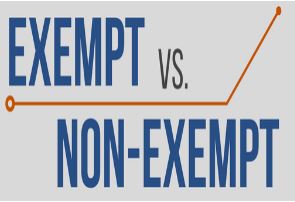
by editor | Jan 29, 2023 | Human Resources, Interdisciplinary Team
Maslow’s hierarchy of needs is a theory that can be used to provide leaders and organizations with guidance on how to motivate employees. But what is this hierarchy and what is Maslow’s theory?
What is Maslow’s Hierarchy of Needs?
Maslow developed his theory on the Hierarchy of Needs in the 1940s. The hierarchy suggests that people are first motivated to fulfill basic needs before they move on to more advanced needs.
The theory states that there are five fundamental human needs that can be represented as a pyramid. Each of the five needs builds on the prior need. Individuals want to meet needs at a lower level before progressing to needs at a higher level.
The highest-level need in Maslow’s hierarchy is self-actualization, where an individual achieves self-fulfillment.
How does Maslow’s Hierarchy of Needs relate to leadership?
A good manager understands this hierarchy of needs and leads his team so that he is meeting each employee at the employee’s current level of need while simultaneously encouraging the employee to continue to move up the pyramid so that the employee eventually achieves self-actualization. In the workplace, self-actualization translates to an employee’s desire to maximize his potential at work.
What are the levels of the hierarchy?
In Maslow’s hierarchy, Level 5 is the lowest level and Level 1 is the highest level. An individual or employee will start at a lower level and move up levels as he tries to achieve the highest level in the hierarchy.
Level 5: Psychological needs – survival
This is a most basic need for survival. Employees at this level want to feel secure that they have a steady income.
Level 4: Safety and security
Managers and leaders need to make employees feel secure. Some managers do not realize this and think that employees will work harder if they are “kept on their toes.” But this strategy usually fails. Rather than working harder, employees become obsessed with job security.
- How can a leader make employees feel secure?
- Communication: Share the big picture with employees.
- Clear rules: Employees should know where they stand at all times
- Be supportive: Support employees if they are struggling or if they fail
- Be consistent: Be the same every day
- Be fair
Level 3: Belonging (social needs)
Employees enjoy a team environment and a social workplace.
- How can a leader create a social environment and a feeling of belonging?
- Conduct team meetings
- Create an area where people can gather, e.g., for coffee
- Encourage a feeling that people are a part of the team
- Organize social events outside of work
Level 2: Esteem/status
Employees want to be noticed, on occasion, and to stand out for their accomplishments and for what they do better than others. People like to feel important, occasionally.
- How can a leader meet this need of employees to feel important?
- Give employees regular recognition
- Spend time with employees
Level 1: Self actualization
Self-actualization is maximizing an self-fulfillment where an individual discovers his potential and uses his skills to the utmost. This is the highest level of Maslow’s hierarchy, where employees are maximizing their potential at work.
- How can a leader help employees maximize their potential?
- Give employees ownership of tasks or projects
- Empower employees
- Help employees find ways to advance in their careers
What defines a great organization?
Maslow believes that in a great organization, employees will be at the level of self-actualization. That is, all employees must achieve Level 1. For employees to achieve Level 1, leadership must support employees through all the lower levels of the hierarchy. The pyramid will crumble if employees are lacking the supporting levels.
Further, leadership must make it possible for employees to achieve self-actualization. Employees need to be trained, to acquire new skills, and to have an environment where they gain a sense of satisfaction. A good leader will learn his employees’ potential and create an environment where people are trusted, can flourish, and are given important tasks to complete. A good leader will create an environment where employees can achieve self-actualization.
Where can you find more information?

by editor | Oct 30, 2022 | Human Resources, Payroll
What is an exempt employee?
Exempt workers are paid on a salaried basis. Salaried employees receive a prespecified amount of compensation each pay period. Their salary may not be reduced because of changes in the amount of work performed or because of changes in the quality of work performed. Learn more about exempt employees here: Exempt vs. Non-Exempt Employees
May pay be deducted from an exempt employee’s wages?
Under the federal Fair Labor Standards Act (FLSA), employers may not deduct wages from an exempt employee’s wages due to partial day absences. However, an employer may deduct time from an exempt employee’s accrued Paid Time Off (“PTO”) or accrued vacation time for partial day absences. State laws may differ from the federal guidelines and each state may have its own regulations.
In general, if a salaried employee performs any work during the workweek an employer must pay the employee their full salary amount. However, there are a few situations where deduction from an exempt employee’s salary is permissible under federal law:
- A workweek where an employee performs absolutely no work
- The initial or final week of employment (where the employee did not work the full workweek)
- Absences of one or more days due to personal reasons, other than sickness or disability, including vacation
- To offset amounts the employee receives from jury or witness fees
- For leave taken under Family Medical Leave Act (“FMLA”)
- Unpaid disciplinary suspension of one or more days in accordance with documented workplace policies
Where can you find out more?

by editor | Oct 30, 2022 | Employee Onboarding, Human Resources, Payroll
The Fair Labor Standards Act (FLSA), enacted in 1938, has four major provisions: regulations for minimum wage, overtime pay, record keeping and child labor law. It also introduced standards for exempt and non-exempt employees. As it relates to the FLSA, exempt means free from an obligation of overtime pay. Note that FLSA regulates the Federal standards; the states may have different regulations in each of these areas.
What is an exempt employee?
Exempt employees are not eligible for minimum wage, overtime regulations, and other protections that are extended to non-exempt employees. Exempt employees receive a set salary every pay period. Exempt employees are typically salaried workers and often fill executive, supervisory, or administrative positions.
Which employees are covered under the FLSA law?
Enterprise Coverage: If a business is covered then all employees of the business are entitled to FLSA protection. What businesses are covered under enterprise coverage?
- Business has at least two employees and does sales of at least 500,000
- Named enterprise coverage: Hospital, business providing medical or nursing care for residents, school, preschool, or public agency, whether private or non profit
Individual Coverage: Individual employees in an organization may be entitled to FLSA protection even if the entire organization is not entitled to FLSA protection
- Individual is engaged in activity that involves working across state lines (interstate business) on a regular basis
- Domestic service workers (e.g., housekeeper, cook, babysitter)
Should an employee be classified as exempt or non-exempt?
- An employer should consider all employees as non-exempt and overtime eligible unless they can meet a specific exemption under federal or state law
- An employee who remains in the same job position should not move back and forth between exempt and non-exempt. Further, an employer cannot decide that they want to make an employee exempt. The regulations determine FLSA classification.
- Job title does not determine classification
Employers must correctly classify their employees as exempt or non-exempt or they run the risk of accruing compliance violations.
Can any worker qualify as an exempt employee?
An employer may wish to classify all employees as exempt employees – in this way avoiding the requirement to pay time and a half for overtime hours worked. However, not all employees are eligible to be classified as exempt employees.
The Department of Labor (DOL) has established guidelines to determine who is eligible to be considered exempt. The qualifications generally fall into three categories: salary exemption, nature of payment, and job duties. An employee must pass the tests in all three categories to qualify for exempt status.
Exempt employees test #1: total earnings
The first test to qualify an employee for exempt status is that the employee must earn the salary threshold set by the FLSA to be exempt. The minimum salary threshold of the FLSA changes every year. In 2021, the required minimum employee compensation to have exempt status was $684 per week ($35,568 per year). This salary threshold must be met regardless of being part time or full time. If the salary threshold is not met, the employee may not be classified as exempt (with an exception for teachers, doctors, and lawyers).
Exempt employees test #2: nature of payment
The second test to qualify an employee for exempt status is that the employee must be paid on a salaried basis, where compensation is not reduced due to quantity or quality of work.
Exempt employees test #3: job duties
The third test to qualify the employee for exempt status is whether the employee meets the job duties that qualify for exempt status. There are only certain job duties that qualify an employee for exempt status. These job duties involve a higher level of expertise or knowledge or require the employee to hold certain professional roles. There are several categories of job duties exemptions:
Executive exemption: employees who would qualify for an executive exemption would
- Regularly supervise employees
- Be responsible for managing part of the business
- Play a role in hiring employees or in delegating tasks
Administrative exemption: employees qualifying for an administrative exemption would
- Perform office jobs directly related to business operations or management of the organization and its customers
- Exercise independent judgement over business decisions
Professional exemption: employees qualifying for a professional exemption would
- Perform job duties that require specialized education
- Have a college degree or higher in their field
Computer exemption: employees with this exemption would
- Have a computer related role
Outside sales exemption: employees qualifying for this exemption would
- Have a primary duty of making sales or securing contracts or orders
- Conduct their work outside of the business’ premises
Where can you find out more?

by editor | Oct 29, 2022 | Human Resources, Payroll
How should an employer handle unclaimed wages?
An employer may find that an employee fails to cash a paycheck. Most often, this occurs with the final pay check. These “unclaimed wages” may not be treated as “found money.” When an employee fails to pick up a final check or fails to cash a check these unclaimed wages may become a form of “abandoned property.”
When is property considered abandoned?
Each state has its own definition of what it specifies as the abandonment period. That is, the time that each state requires that property must lay dormant before it is considered abandoned varies from state to state.
Once the unclaimed wages are considered abandoned, the employer must pay these unclaimed wages over to the state where the person last worked. The state steps into the shoes of the “lost owner” and takes ownership of the property until the rightful owner is found.
The state laws governing abandoned property are known as esheat laws because the property “escheats,” or reverts to the state and is not kept by the employer. Escheat laws are intended to give the employee an opportunity to claim the funds without having to track them down through corporate mergers or relocations,. Instead, the employee can go to the state to locate and claim the funds.
How long should an employer retain the funds?
Before an employer does anything with the unclaimed wages, the employer should check state laws to see how long the wages must be held, the employer’s obligations for locating the owner, when the employer must report the unclaimed wages to the state, and where the report must be sent to. In some states the wages are sent to the treasurer’s office. In other states the wages are sent to the attorney general’s office. States generally require that the employer holds the funds for at least one year.
Trying to locate the employee
Once an employer identifies unclaimed wages, the employer cannot simply transfer these funds to the state. The employer is obligated to make efforts to locate the employee. Employers must demonstrate that they have taken steps such as sending a tracked mailing (e.g., certified letter or UPS) to the employee’s last known mailing address or other method of contacting the employee using their last known contact information.
Most states require the employer to wait a minimum of six months after making these attempted notifications. Once the employer has complied with the statutory requirements – and can demonstrate that in the filing with the state – the funds may be returned to the state.
Reporting and remitting funds to the state
States have different reporting deadlines in the year. Some states use a date early in the following year after the dormancy requirement is met. Other states have a more accelerated deadline which would require advanced planning to ensure the deadline is not missed.
State unclaimed property laws also have detailed requirements, that vary by state, for remitting the funds to the state and for required supporting documentation.
Summing it all up: What is required of the employer?
Each state has its own unclaimed property rules and requirements.
Step 1: Document every contact you made with the employee
Most states require employers to show due diligence that they made all efforts possible to reach out to employees and give them the funds that they are owed in an attempt to keep unclaimed wages from becoming abandoned property
Step 2: File an annual report with your state
States typically require the employer to file an annual report including the employee’s name, last known address, amount and payment date of the unclaimed check, and the date of last contact with the employee
Step 3: Send the unclaimed wages with the report
With the report, the wages must be sent to the state. The state holds the money indefinitely (until claimed). The employer’s responsibility for paying the wages ends once the employer submits the wages and the report to the state.
Where can you find more information?
Recall that these laws vary by state and each state has its own requirements.
- National Association of Unclaimed Property Administrators (NAUPA) webpage has links to state websites: https://unclaimed.org/
- Search by state name and word “escheat”

by editor | Oct 28, 2022 | Employee Onboarding, Human Resources, Human Resources, Payroll
When should a worker be classified as an employee versus as an independent contractor?
What is the difference between these two types of workers? Why is it important for a hospice agency to properly classify the workers who are providing services? Why is it important to determine whether the workers providing services are independent contractors or employees?
Why would an employer want to classify workers as independent contractors instead of employees?
A business must withhold income tax, withhold and pay social security and Medicare, and pay unemployment taxes on the wages paid to employees – but not those paid to independent contractors. By classifying workers as independent contractors, an employer can avoid payroll taxes, unemployment insurance and workers compensation coverage. The employer can also save on the cost of all the benefits that are offered to employees but are not offered to independent contractors.
Are there consequences to misclassifying workers?
The IRS is increasing its efforts on auditing companies, with a particular focus on worker classification. The liability from an employment tax audit that identifies misclassified workers may be quite significant. A business that classifies workers as independent contractors instead of employees may be subject to retroactive tax withholding, penalties, and interest.
How can an agency differentiate between an employee and an independent contractor?
An employee is typically a person who is providing services where the employer controls what services are provided and how the services are provided. Specifically, the employer has the right to control the details of how the worker performs the tasks. There are three key areas to consider when evaluating whether a worker is an employee or an independent contractor:
- Behavioral control: Is the worker free from control or direction over performance of the tasks? Or, does the employer have the right to control how the worker performs the tasks?
- Financial control: Is the worker engaged in independently established business or occupation? Or, does the employer control the financial and business aspects of the worker’s job? For example, does the employer control how the worker is paid? Does the employer provide the supplies and the tools that the worker requires to complete the tasks?
- Relationship between the parties: Does the employer provide the worker with benefits such as insurance, vacation pay, or pension plan? Are the services that are performed a key aspect of the business?
By considering the different aspects of behavioral control, financial control, and the relationship between the two parties, and employer can determine whether a worker is more appropriately classified as an employee or as an independent contractor. Each of these three key areas involves multiple factors. Determination of whether a worker is an employee or an independent contractor is not an objective test and some of the factors are more important than the others, depending upon the industry and type of independent contractor being evaluated.
Where can you find out more?
by editor | Sep 15, 2022 | Accounts Payable, Billing, Billing - General, Compliance and Regulatory - Directors, Documentation - Nurses, Hospice 101 - Aides, Hospice 101 - Chaplain, Hospice 101 - Nurses, Hospice 101 - Office Team, Hospice 101 - Social Workers, Human Resources, Intake, Medical Records, Metrics and KPIs, Office Setup, Payroll, Rules and Regulations - Chaplains, Rules and Regulations - Nurses, Rules and Regulations - Social Workers, Rules and Regulations - Volunteers
Are you confused by the Acronym Alphabet Soup?
Does the never ending list of acronyms used in the hospice and healthcare industry leave you confused?
Are you worried that you may confuse CMN with CMP?
To help sort out the confusion, we add here links to lists of acronyms:
Use these acronym listings to help clarify things when you inevitably are faced with acronym confusion!







